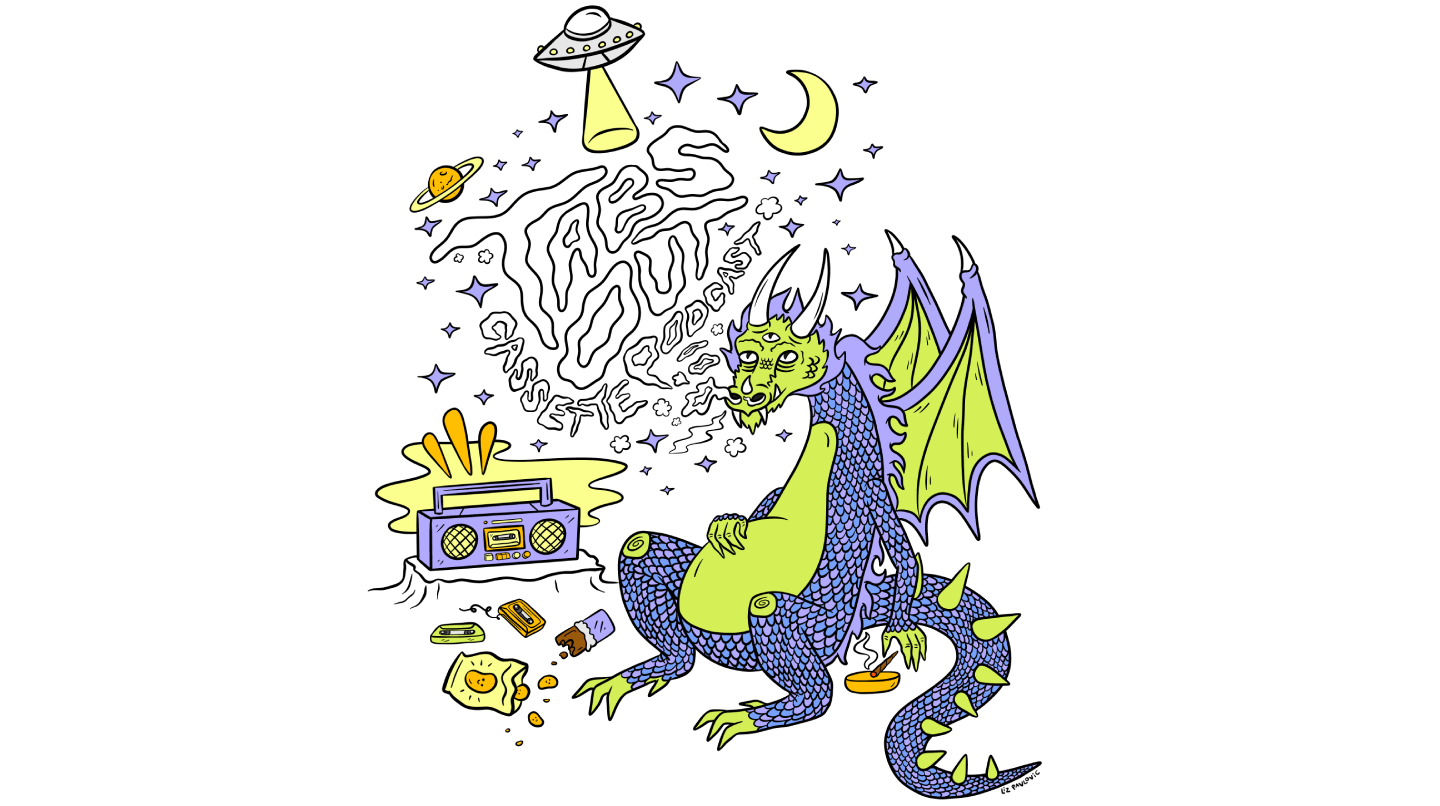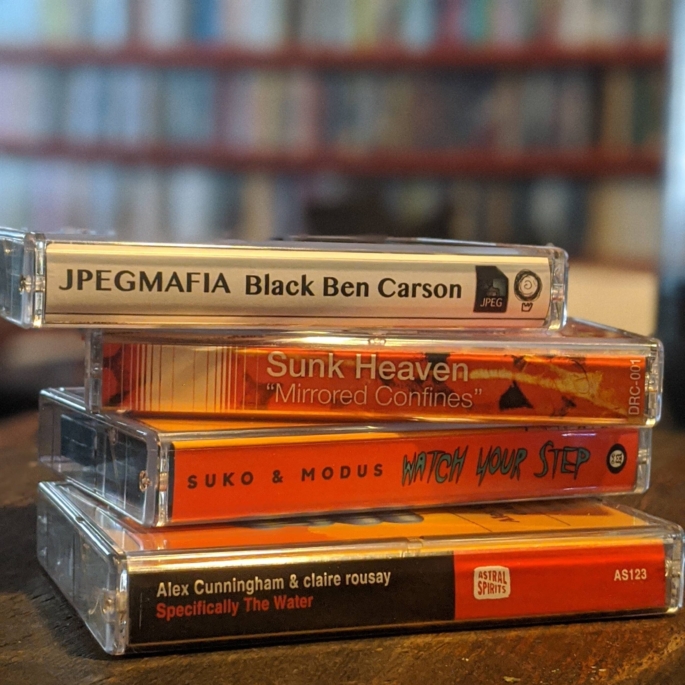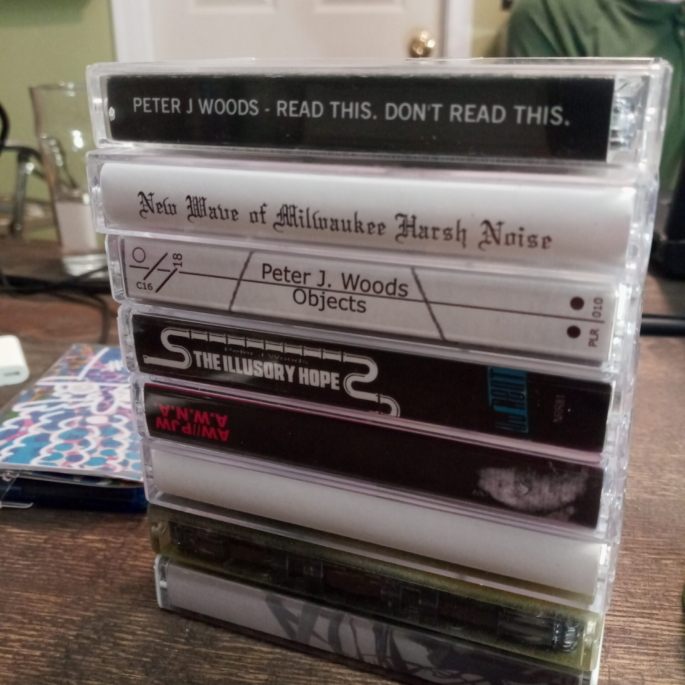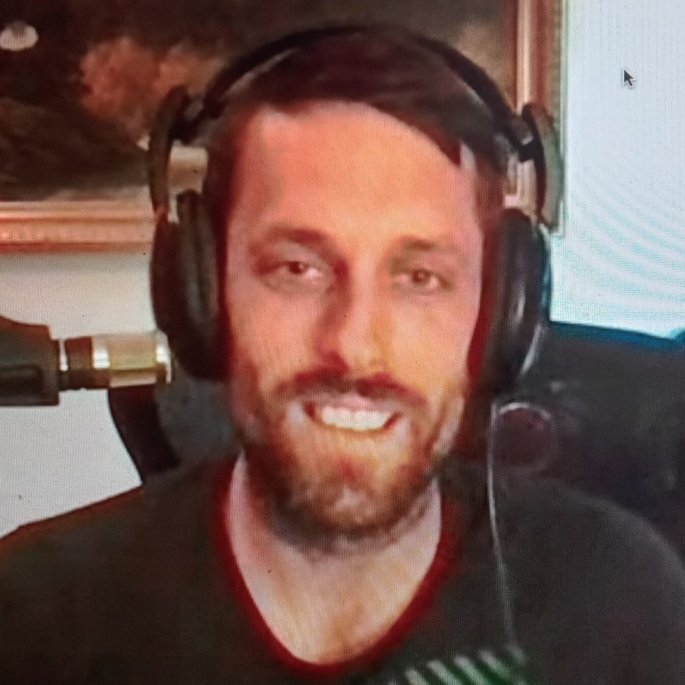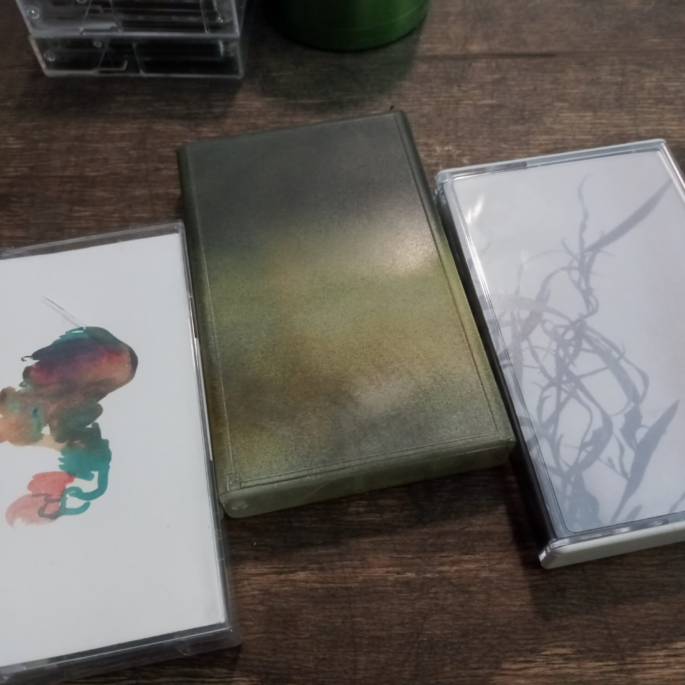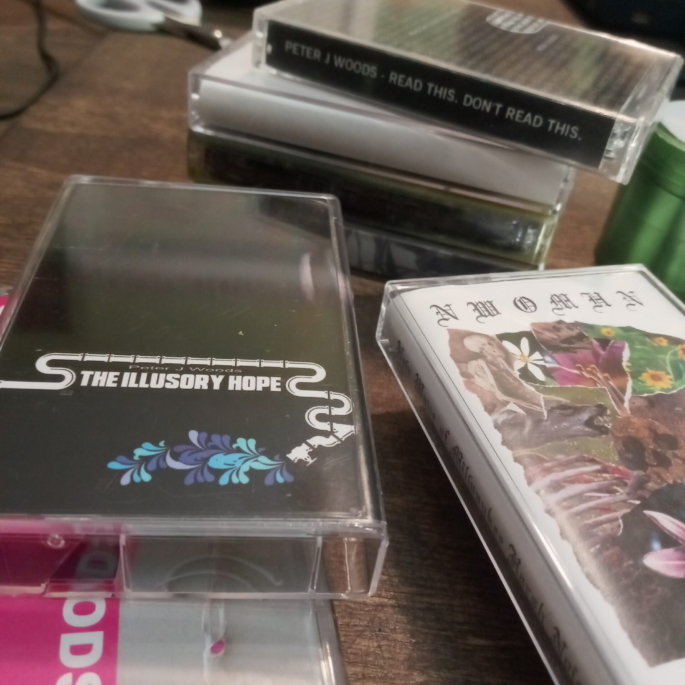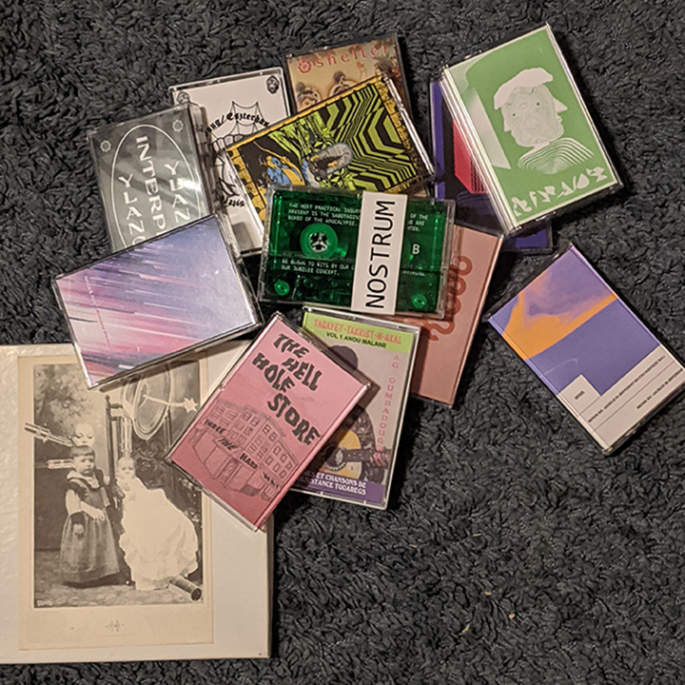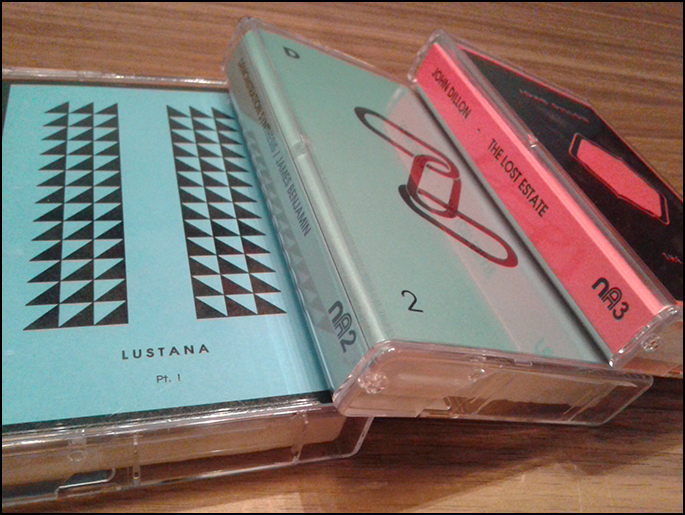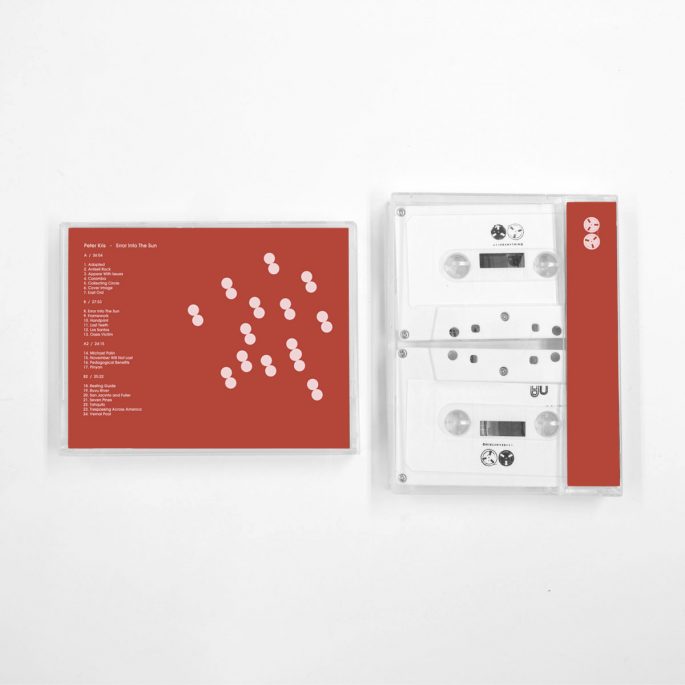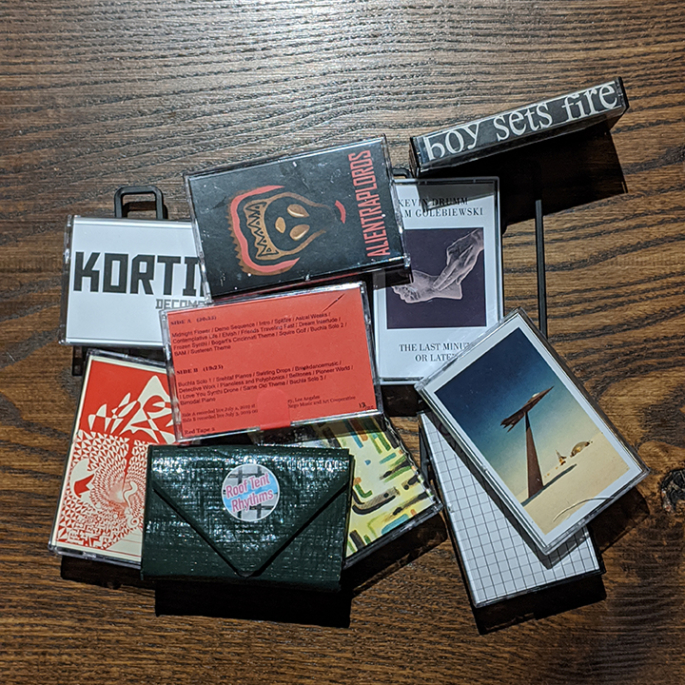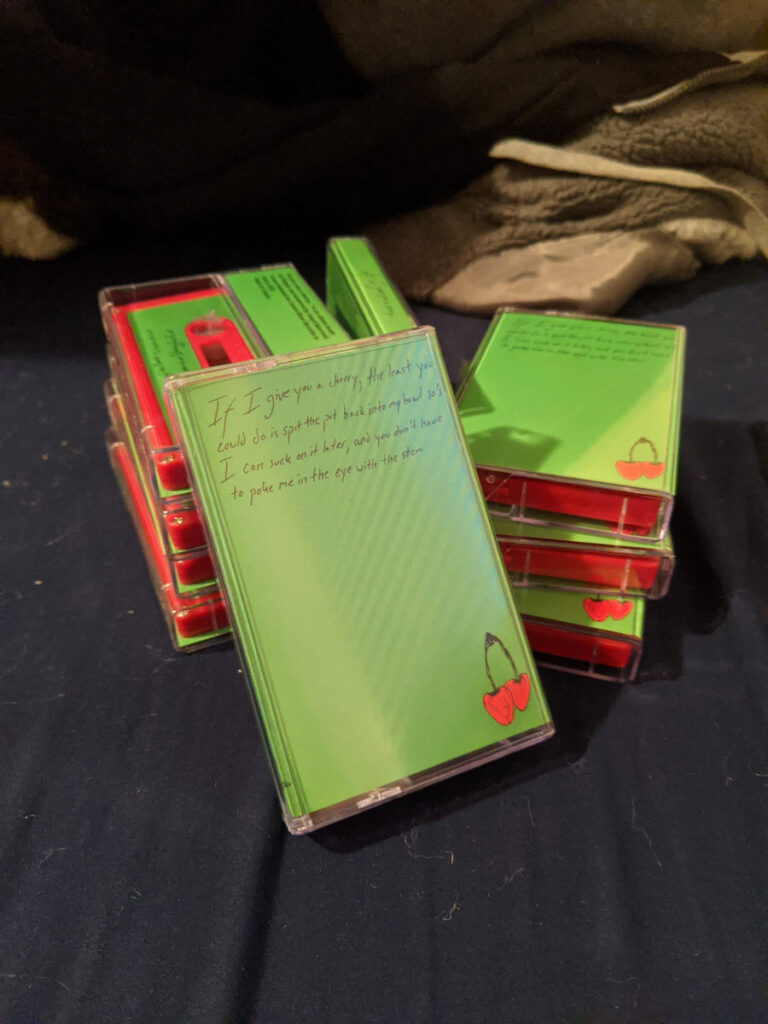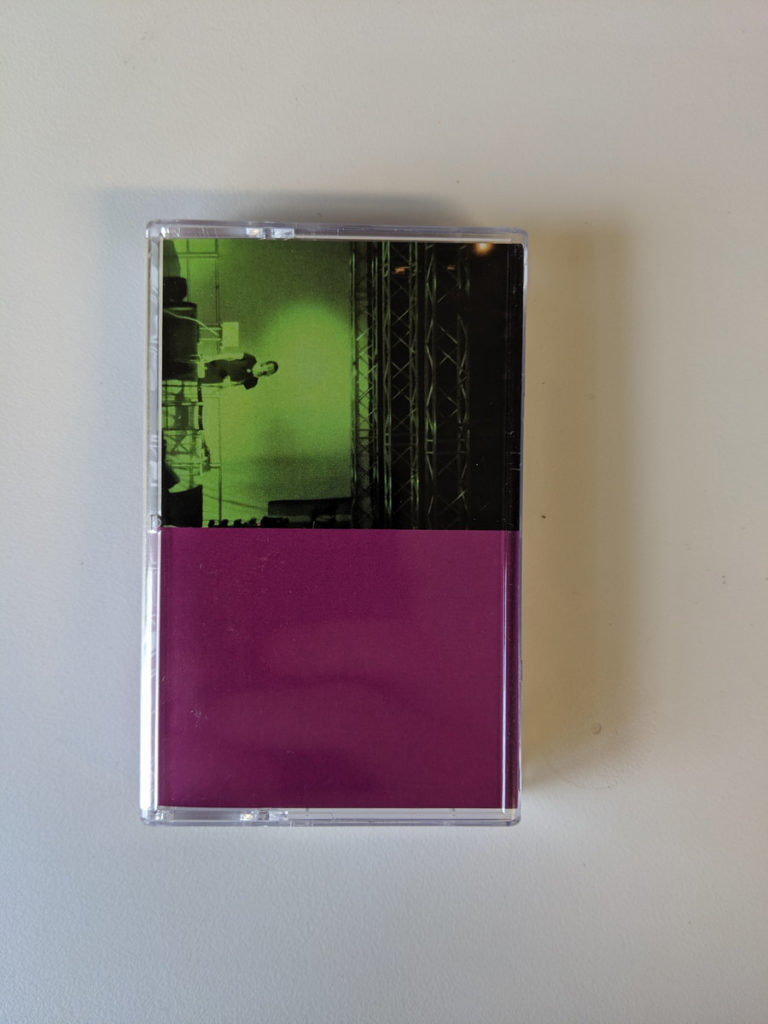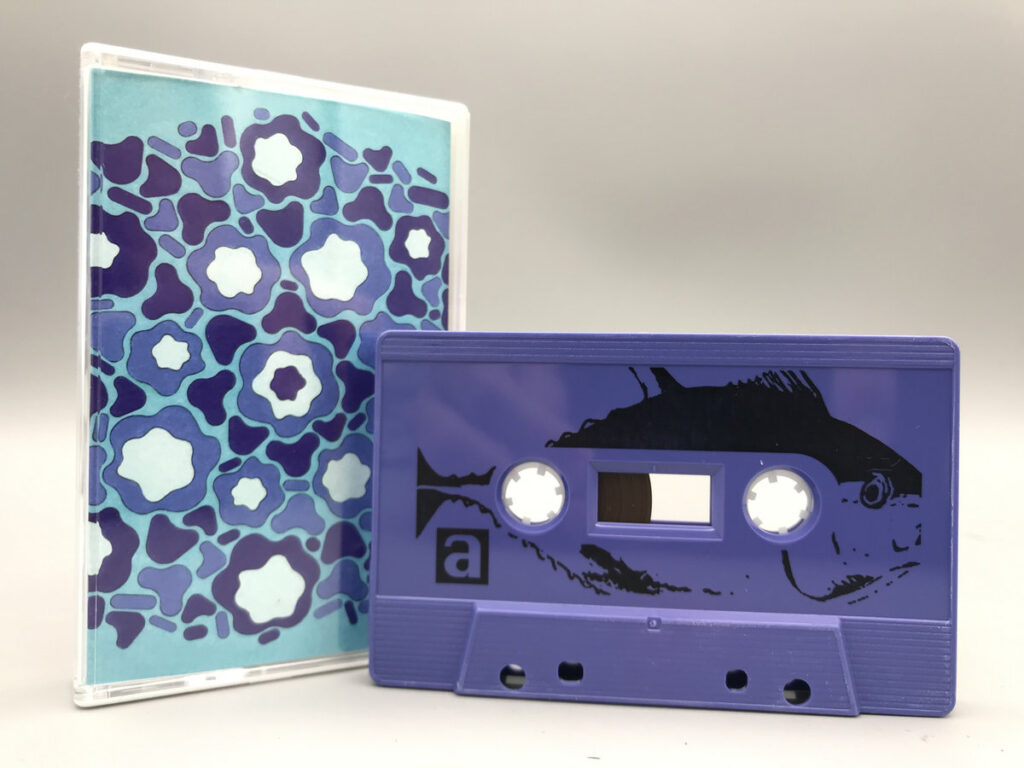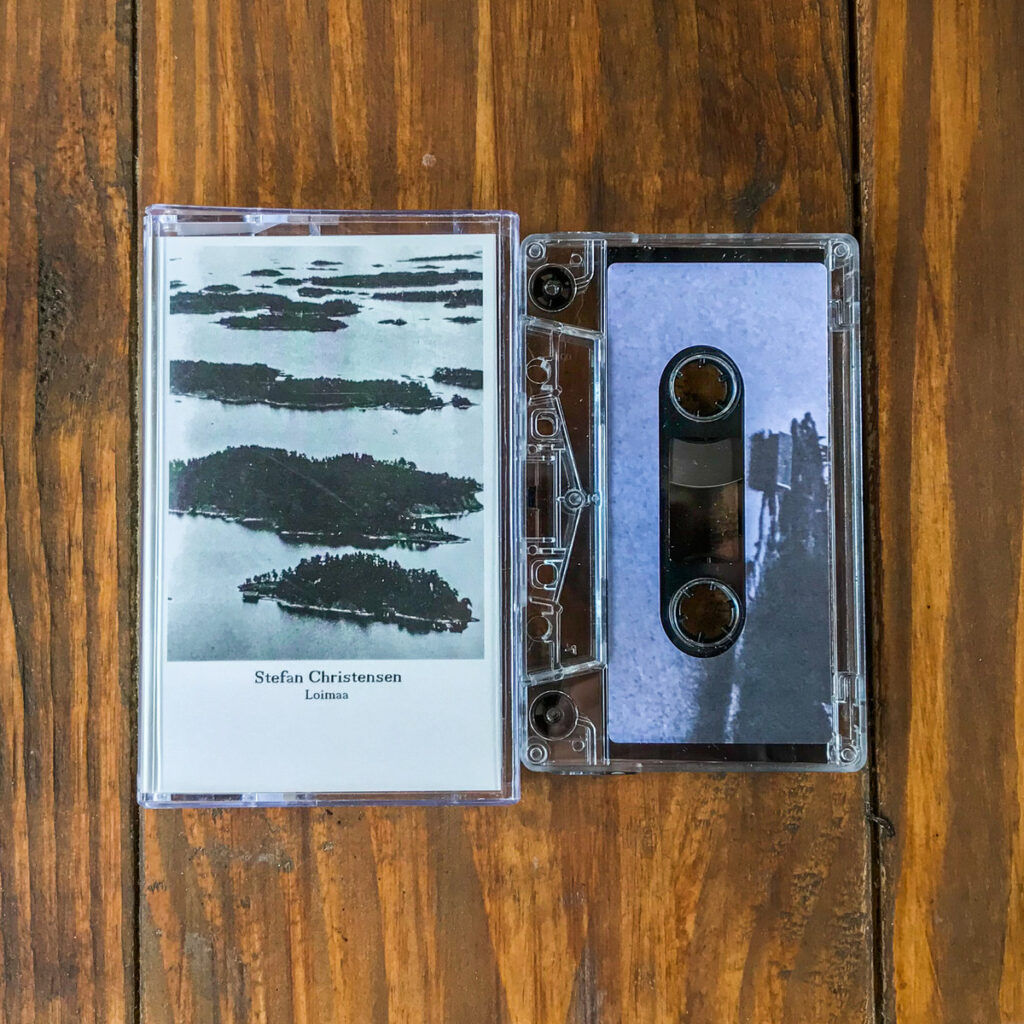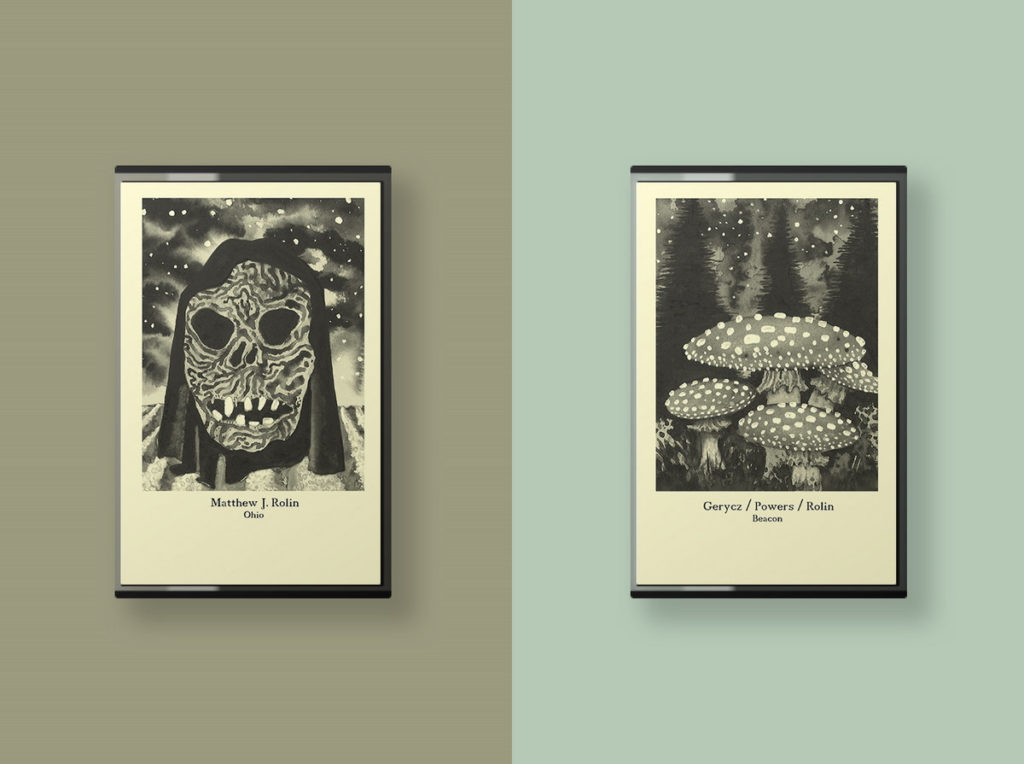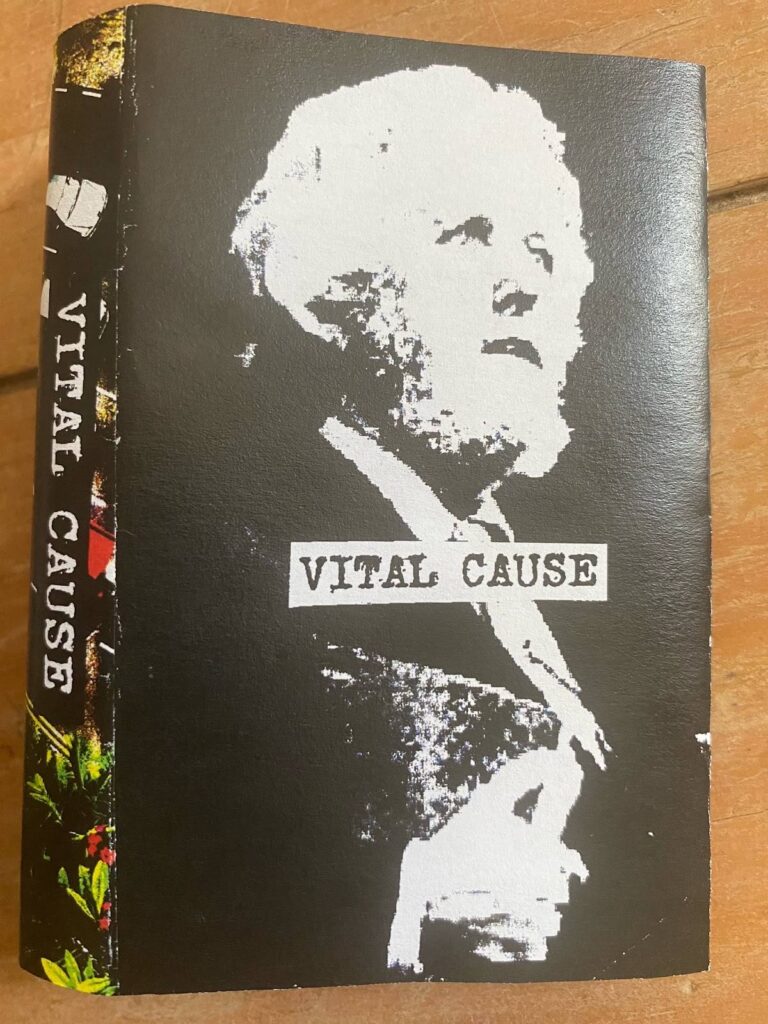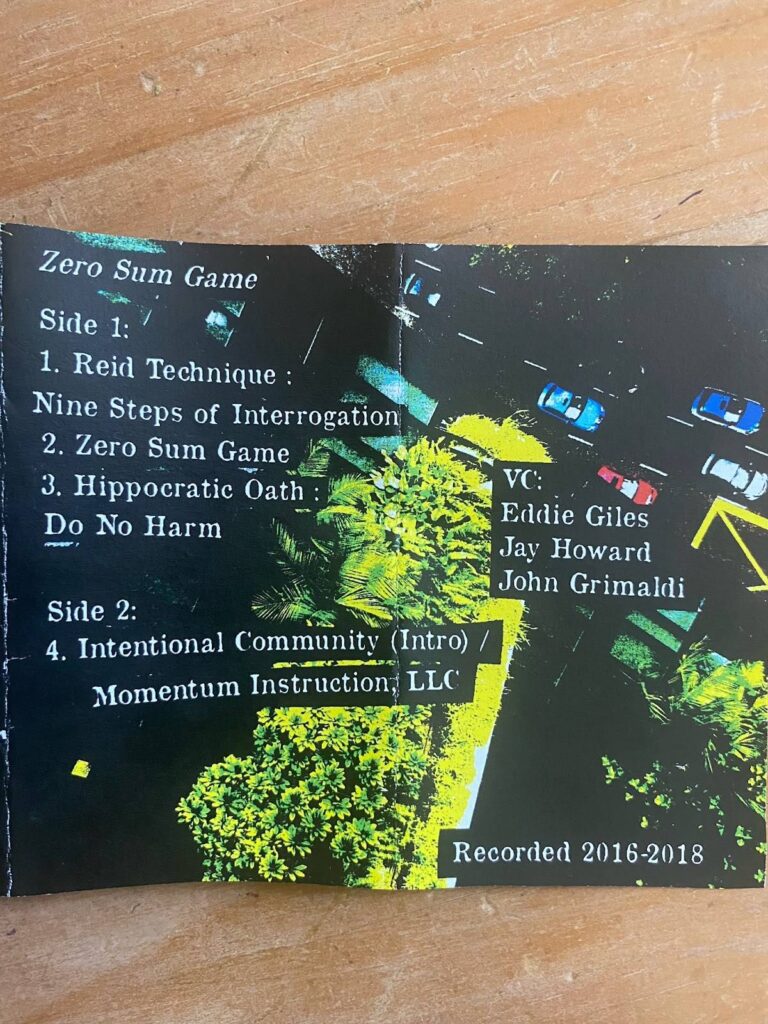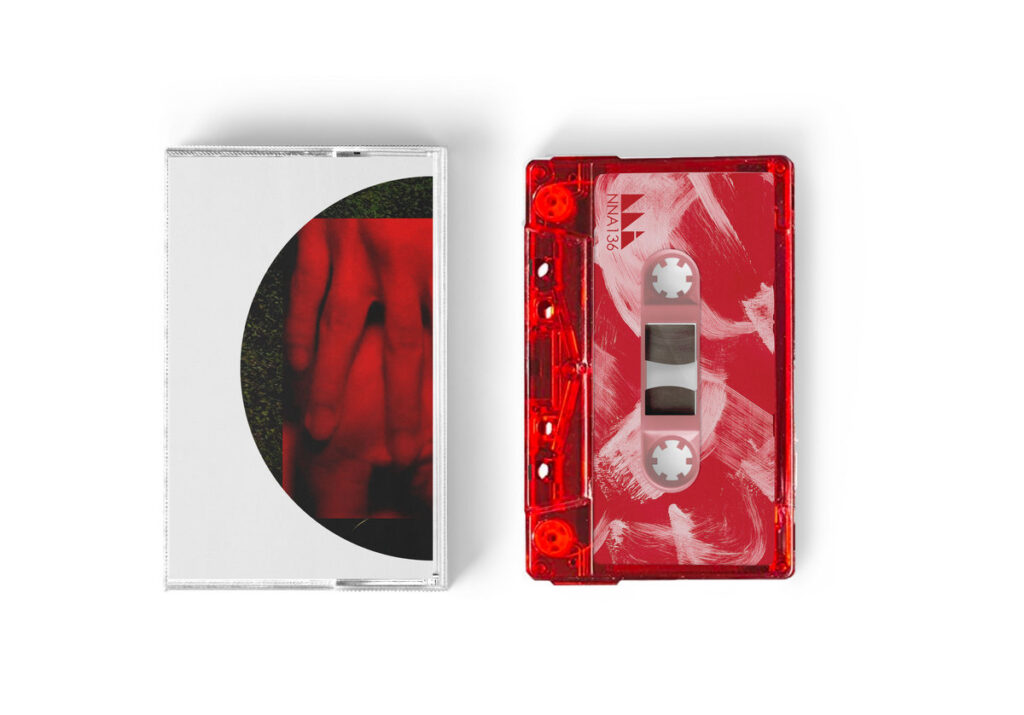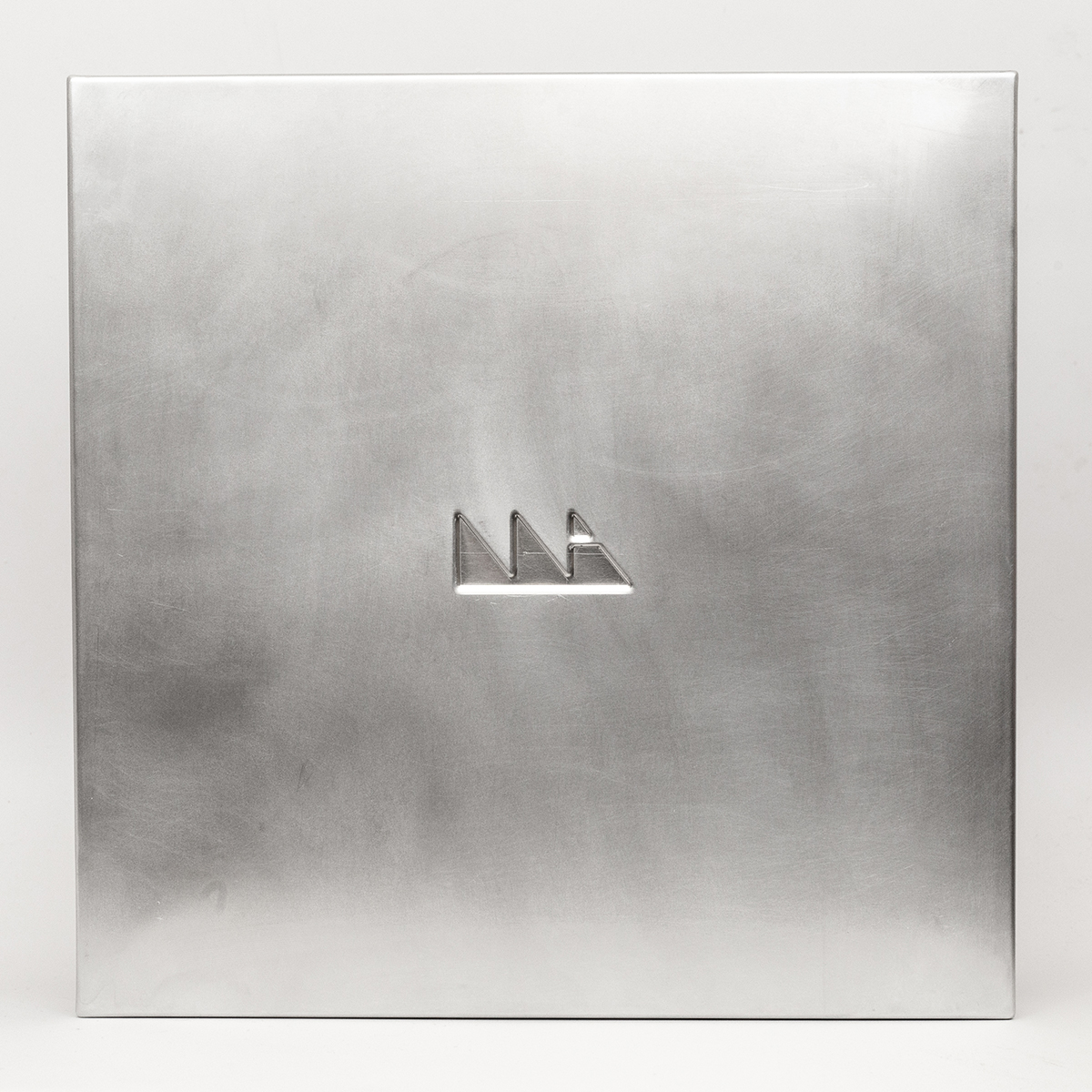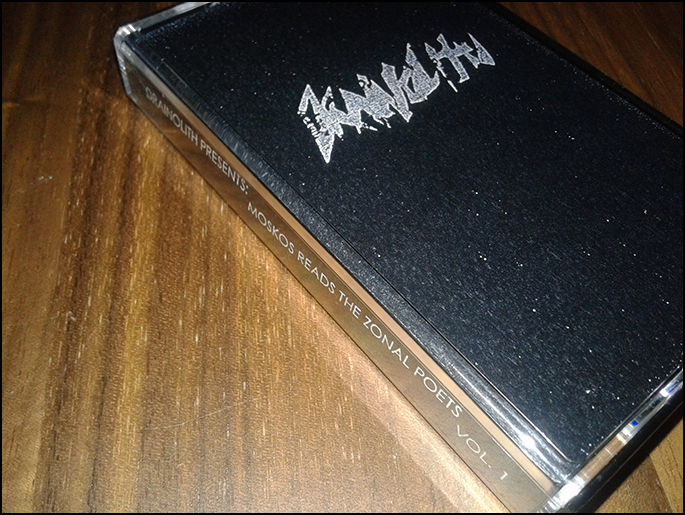8.13.21 by Matty McPherson
Back in Winter, an album out of South Korea quickly spread like wildfire around RYM, Bandcamp, and various other outlets. Anyone who was lucky enough to pick up a cassette of Parannoul’s To See the Next Part of the Dream may have noticed that it was the inaugural release (LR-001) of a new midwest upstart, Longinus Recordings. For the past few months, Matthew Cruz has turned what was a serendipitous act of good faith into a functioning label with three tape releases under its belt, a couple of digitals, and a sudden global cult following. His documentation via Instagram has been a worthwhile microblog to follow, even when it implied a hiatus was coming. Although there’s not going to be a sudden hiatus.
When Thomas of TBD Presents and I hopped on Zoom in late May to discuss Longinus, it was obvious that Matthew Cruz had infinite futures in mind, as well as an endless barrage of love for the artists he’d been working with. So, here’s the story of Longinus Records as it stands in Summer 2021 — how he found Parannoul, turned a one-off project into a real deal, and where the label is headed next — amongst a litany of other psychedelic curios and musings.
This interview was assembled through an open dialogue/conversation and we thank Mr. Cruz for being a cool fella!
Are there any labels that influenced Longinus when you started?
Now as far as record labels go, I don’t think there’s anything terribly differentiating between labels big or small; it’s the concept they produce. Labels rarely put mission statements and such on their releases.
Now if I had to choose one that I love, Factory Records and the Madchester scene. I loved that Tony Wilson gave his artists free reign to do whatever the hell they wanted. At that time in history, artists were subservient to the label, not the other way around. And yet, how Factory was operated became a catalyst for Madchester! Wilson’s unique DIY ethos being able to break that hold on how music was being produced and distributed really resonated with me.
Obviously, I don’t want to say my whole label is completely inspired by Factory Records because they collapsed after Happy Mondays’ garbage album “Yes Please!” and we’re not trying to do that with Longinus.
Can you tell us about your job and what you are currently doing?
So, I work at a college radio station and just started a summer internship with a large corporate fast food entity. In the past, I’ve been writing longforms about music. I remember in one of our team meetings, this one person was talking about how some people we’re [writing these longforms] to flex their music taste. To a degree, something I’d agree with. That’s not necessarily the point though; it’s about sharing the music you like. Coming from someone who has had a musical journey for 7 to 8 years. Some people are getting into music for longer or just recently. The longer you go, the more obscure you write. So part of what I do is be a fake tastemaker/journalist.
The stuff I write isn’t obscure. I’ve written about Gas’ Pop. That ambient techno that emulates LSD is my shit. I adore it to the point I have a test cassette of Pop! It sounds like a fake urban legend. I even dm’d Wolfgang Voight and a week later he got back and said if it looks like this, it is real! I can’t help but be thrilled I own that.
So, Psychedelia is kind of overarching how you listen to music and what you like? More so than shoegaze?
Honestly, I’d jokngly describe myself as a “fake as fuck” shoegaze fan. Yes, I love “the big three” a lot for their textures and emphasis on psychedelia. I’m someone who enjoys exploring psychedelia. I would consider Wolfgang Voight’s Gas as the zenith of Psychedelia, simply in terms of the way it replicates the effects of psychedelic drugs; it may not be stylistically psychedelic music but I’ve always been intrigued by “wall of sound” style music with grand production that gives off kaleidoscopic sounds that are vibrant and thick.
Although, I don’t explore shoegaze as an offshoot of psychedelia, I explore psychedelia as a concept and how they replicate the textures of it. As far as Shoegaze goes, I love a lot of Galaxie 500 and slowcore, fishmans… I don’t listen to a derivative of Loveless and think it’s garbage or M83’s Dead Cities and try to discover every underground shoegaze gem.
Like earlier this year, I got into a thing where I was only listening to Happy Mondays, the Stone Roses, and Leisure by Blur (which isn’t even that great of a record!) because I thought there were engrossing takes on Psychedelia.
What was the plotting out of Longinus Recordings, especially for the inaugural release (Parannoul’s To See the Next Part of the Dream)?
I was on RYM one day, sorting by new tunes to see if there was something I could flex on my co-workers and friends. And I found this album by this South Korean individual going by the name of Parannoul—it had 100 ratings or so at the time which is a decent amount for a DIY record, but in the grand scheme of things isn’t that much. Before I was just listening to the Stone Roses or something and I decided to throw it on after. It was a definite “a-ha!” moment, like listening to Twin Fantasy for the first time and realizing “this is gonna be a visionary piece of music that will be influential.” It’s kind of surreal having listened to To See the Next Part of the Dream and it was as good as it is while NOBODY knew about it! I was in that moment when I realized “Holy shit! I wanna do something with this!”
So I emailed Parannoul at like two in the morning. I think I verbatim told Parannoul that it was “visionary” or some other high praise and asked if I could press cassettes of it. I’m not a musician nor a professional tape label; I had never had experience with this, but I was just so enthralled and impressed by his album, that I was more than willing to front the costs and make these tapes. Then I got an email a day later with a confirmation, and then it kicked in that I own a tape label now…
Yup, so I started designing the Jcard. The first one I did, was really really shitty, because I wanted to lock down this proof-of-concept so that people could see it was real! I literally modeled it off of Twin Fantasy, making a basic Jcard that would work for all intents and purposes.
I had thought, “okay, I can go on Amazon and purchase 30 cassettes and dub them with my Nakamichi BX-150, a $5 goodwill purchase! I had envisioned that this album was likely to fade into obscurity and that I could say “Hey, I made a cassette once!” and that I would have made a legitimate physical copy of Parannoul’s music and we would part ways. We really did think we would only sell 30 tapes if we were lucky.
I kind of realized that I was getting in over my head when the initial test batch of 30 tapes sold out in two hours. At this time, Parannoul had doubled on RYM to over 200 ratings where it was consistently at the top for the early “Top 40 of 2021” list. With not a lot of major album competition at this time, it was finding an audience. So, the release and success was truly serendipitous. I could not make the time to efficiently produce another run in house, so I turned things over to professional duplication. I had sold 100 of them…and then the Pitchfork review came out, which really put it in scope how special this type of music had come out was for a lot of people.
Yeah, you can even see this with Home is Where and Hey ILY, these burgeoning emo acts that threw their releases out on tape and have kind of blown up thanks in part to that network of critics.
Yeah! With Parannoul, Ian Cohen literally posted on Twitter something like “Hey this album with a blue smokestack is getting a lot of buzz on music forms…” and I realized we were likely gonna get a review. I love Ian Cohen, and in every sense of the word that guy is a tastemaker. As someone who participated in the vibrant DIY scene in Michigan, it was really awesome to him to champion bands like Dogleg that didn’t seem like they would otherwise get attention. Their BNM sorta smashed the stigma of “good midwest emo/DIY records that are capped at mid 7.0s”.
For the record, I used to follow the DIY scene rumbling across the Midwest more often. I attended those last two years of Bloodfest, which was basically the emo scene’s Lollapalooza. It was so fun, with a lot of bands of all kinds getting together to play at a Michigan High School! It was too perfect and I can’t believe they allowed that to happen.
Have you found or listened to artists like Asian Glow through critics, other extremely online artists, or on Bandcamp?
I had not listened to these albums or artists before. Total blind listens! While I had seen Home is Where’s “fifth wave emo” image going around, all of my artists I have found through Bandcamp or RYM. When I did find the album, I did start digging into Asian Glow on Bandcamp and saw a web of connections. Most notably that both were in Seoul, South Korea. People were not tuned into this at the time, but if you started checking the trending for Seoul, it was picking up.
It was another “eureka” moment with Cull Ficle. I was hearing a bunch of reference points from those shoegaze tinges to the Microphones; passionately written songs with math rock melodies. Of course I wanted to press it on tape! And its fifty tape run took three days to sell out, with orders being placed all over the world! We got orders from the UK, Sweden, and a lot from South Korea!
Your Instagram has been a nice microblog of the label’s status. Although is it going on Hiatus for the summer?
Oh no, I fucking lied through my teeth! I figured it might slow down, and yet while I was talking with sonhos tomam conta, the brazilian blackgaze artist (and third release on Longinus), I kinda realized just how big the label is getting. Not many tape labels ever have that advantage of having their first release be a huge album that blows up. Thus, I am going to consolidate Longinus Recordings into a formal operation.
That means I gotta manage it like a real business! Shipping Parannoul tapes (60% were bought US, 40% were bought international) for three days means a lot of customs forms! I need to hire someone to glow up my logo and not make it look like it was a photoshop job (I used the sphere of Longinus from Neon Genesis Evangelion as a temporary but I guess it’s my logo now). Also, there will be an actual Bandcamp page without a stock graphic of Shinji or a still from Akira. It kinda looks like a college kid’s finsta at the moment. I will be upping the dubbing quality of tapes!
I’ve been so consumed by all this work and other stuff I haven’t even given a lot of 2021 tapes any listens! Speaking of, I’ve almost thought about distributing some of these tapes to the local record shops, but I have no idea what that conversation entails.
Will there be repressing of the tape?
Absolutely! Every day there are DMs asking about repressing Parannoul. I plan to do one as well for Cull Ficle after its 2xLP vinyl pressing and a few more titles come down the line.
The reselling of the Parannoul tape on discogs has been insane. I don’t like the way that these markets (especially vinyl) are turning resale. Limited colors or whatnot that sell in ten minutes and are on ebay the next day. It pains me that artists intentionally do that to “throttle the stocks” and maintain this kind of demand for the record.
That it has even turned personal with tapes is even more bizarre. On the discogs page for Parannoul, someone was trading a $100 record for a copy (that I haven’t even shipped) of the Cull Ficle tape. The translucent blue tape of Parannoul was listed and just sold for $210. I literally posted a comment on my discogs begging people not to buy from a scalper because that tape is not of hi-fi quality. You have to be crazy! I might be biased because there are shoegaze tapes I’d splurge on (*laughs*), but maybe I don’t understand tapes. Just get the files, a deck or box, and make it yourself; these are white blank tapes.
Do you think that Longinus is going to be focused on rumblings in the global DIY sounds?
It’s whatever I want to do! Now, I’m not trying to sound self-righteous because I don’t think I’m doing shit! It is these artists and their music that is what sells; I’m just the tape distributor and A&R guy and when I hear an album that makes me go “this shit hits,” I just know I want to press it! There’s a lot of music that is being undiscovered from other college kids the same age as me. I would like to keep one hand in the shoegaze realm. It’s still a sound that I’m partial to.
Right now, I just let my artists vibe. I’m not trying to breathe down their neck (we had verbal contracts and email agreements), they go at their own pace and complete it to their own vision. They got free reign over their music and there is nothing I can do besides just try to help support them and distribute physicals.
Now, there are a few Longinus releases I know that are coming down the pipe. I’m prepping Dating’s next album as a forthcoming release on Longinus. They were actually shouted out by Parannoul in a Sonemic interview; they did shoegaze akin to Parannoul back in 2012, way ahead of the curve! sonhos tomam conta’s second record arrived on 8/8 Bandcamp Friday and I have to figure out their release schedule and situation with physicals! I made twenty tapes of their debut and while I had wanted to make more, a lot of her fans are in Brazil. The Brazilian Real is not very strong to the dollar, and cassette culture is not as huge there unfortunately.
Finally, we have something of a “mogul move” right now. sonhos tomam conta, Asian Glow, and Parannoul are currently teasing a collaborative split at the moment that just straight up excites the hell out of me. Think about these three very different aspects of DIY — the Microphones-style lo-fi, textured rhythms of blackgaze, and pure melodic shoegaze — metastasizing into cutting edge sound. It’s a trifecta of what DIY can do right now. Honestly, I’m thrilled that they are all open and wanting to work together; they took the agency to do that! So, the day that split comes out I will be the HAPPIEST man alive 🙂
